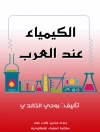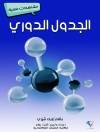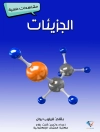This book introduces readers to industrially important enzymes and discusses in detail their structures and functions, as well as their manifold applications. Due to their selective biocatalytic capabilities, enzymes are used in a broad range of industries and processes. The book highlights selected enzymes and their applications in agriculture, food processing and discoloration, as well as their role in biomedicine. In turn, it discusses biochemical engineering strategies such as enzyme immobilization, metabolic engineering, and cross-linkage of enzyme aggregates, and critically weighs their pros and cons.
Offering a wealth of information, and stimulating further research by presenting new concepts on enzymatic catalytic functions in basic and applied contexts, the book represents a valuable asset for researchers from academia and industry who are engaged in biochemical engineering, microbiology and biotechnology.
Innehållsförteckning
Chapter 1: DNAzymes: Synthetic Enzymes Made of DNA.- Chapter 2: β-Amylase: General properties, mechanism and panorama of applications by immobilization on nano-structures.- Chapter 3: Oxidoreductases: Overview and Practical Applications.- Chapter 4: Rieske non-heme iron dioxygenases: applications and future perspectives.- Chapter 5: Cross-linked enzyme aggregates: current developments and applications.- Chapter 6: Immobilization of α-amylases and their analytical applications.- Chapter 7: Immobilized peroxidase catalyzed decolorization and degradation of industrially important dyes from polluted water.- Chapter 8: Screening, optimization and assembly of key pathway enzymes in metabolic engineering.- Chapter 9: Designing of Artificial Metalloenzymes: From Concept to Applications.- Chapter 10: Anti-inflammatory and antidote drug discovery with secreted phospholipase A2.- Chapter 11: Clinical Significance of Enzymes in Disease and Diagnosis.- Chapter 12: Enzymes in food and feed industries: where tradition meets innovation.- Chapter 13: Microbial enzymes in food processing.- Chapter 14: Significance of enzymes and their application in agriculture.- Chapter 15: Proteinaceous Trypsin Inhibitors from Plants in Disarming the Insect Pest.
Om författaren
Dr. Mohammad Fahad Ullah is an Associate Professor of biochemistry in the Department of Medical Laboratory Technology (FAMS) and a research scientist at Prince Fahd Research Chair, University of Tabuk, Saudi Arabia. He received his academic degrees (biochemistry) from Aligarh Muslim University, India. Further he worked as a research associate at Experimental Oncology Laboratory, Department of Biomedical & Diagnostic Sciences, University of Tennessee, USA. His research interests include studies on small molecules (low molecular weight compounds) in the context of their mechanistic actions and therapeutic potential against chronic diseases including cancer and diabetes. He is an active member of AACR (USA)/Royal Society of Chemistry (UK) and member of the editorial/reviewer board of a number of scientific journals. Dr. Ullah has more than 8 years of experience in teaching biochemistry to the students of biological & health sciences. His academic works include close to 50 publications in reputed journals and three books entitled “Critical dietary factors in cancer chemoprevention’ (Springer-Switzerland), “Illustrated notes on biomolecules’ (Partridge-Singapore) and ’Nutraceuticals and Natural product Derivatives: Disease Prevention & Drug Discovery’ (John Wiley & Sons-UK).Dr. Qayyum Husain is Professor in the Department of Biochemistry, Aligarh Muslim University, India. He has obtained all his academic degrees from AMU, India with subsequent assignments as DAAD fellow (German Academic Exchange Service) at the University of Konstanz, Germany and the Technical University of Kaiserslautern, Germany. Dr. Husain has more than 30 years of experience in teaching undergraduate & postgraduate courses to the students of Enzyme Technology, Food & Environmental Biotechnology and Clinical Biochemistry along with supervising 15 doctoral theses. He is a highly cited author with more than 110 publications in journals of international repute. His work has been presented in more than 100 different Seminars, Symposium and Conferences at National and International level. His pioneering research on immobilization of enzymes such as peroxidases has fundamentally contributed to the idea of enzyme stabilization (in the extracellular milieu) and their re-usability with critical significance in biotechnological and industrial applications.












